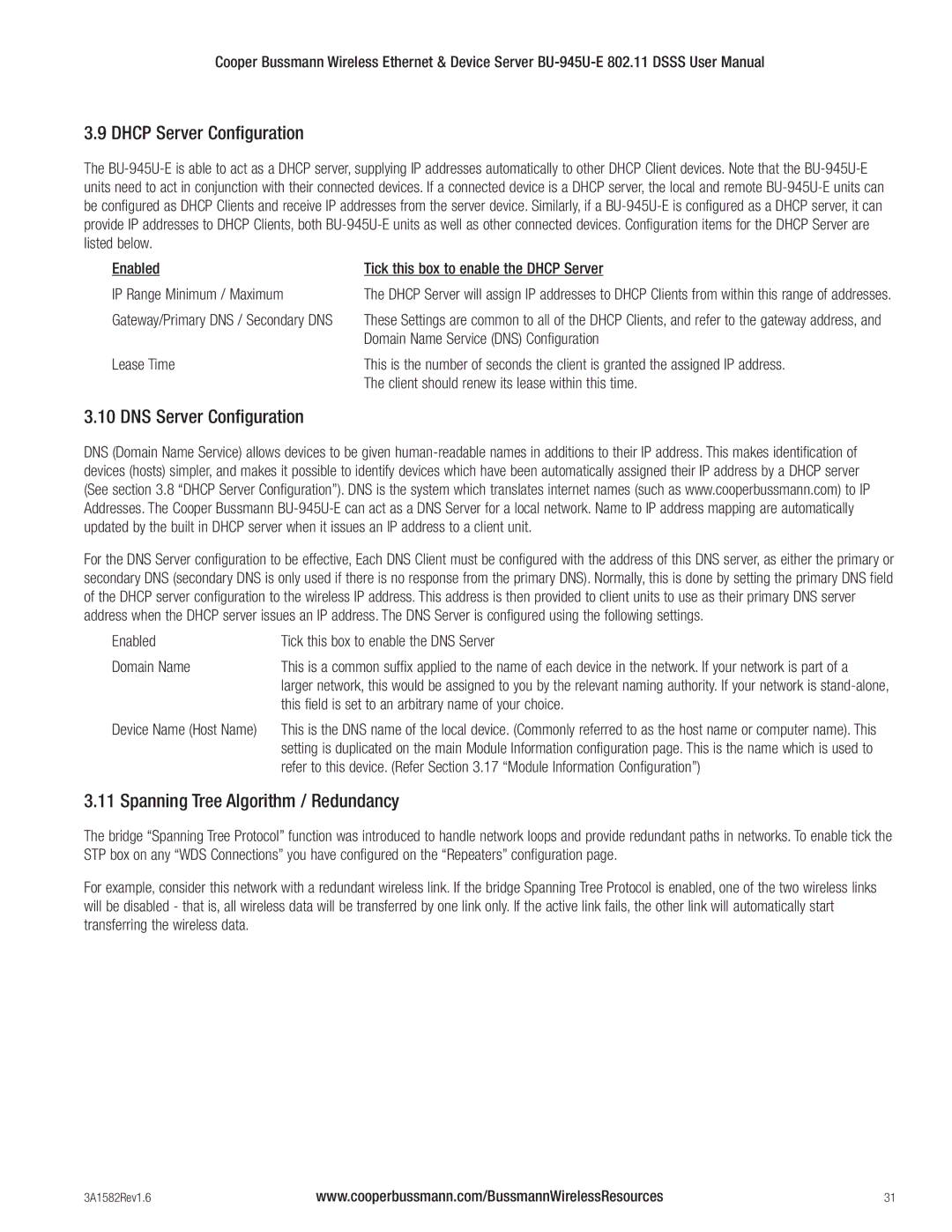Cooper Bussmann Wireless Ethernet & Device Server
3.9 DHCP Server Configuration
The
Enabled | Tick this box to enable the DHCP Server |
IP Range Minimum / Maximum | The DHCP Server will assign IP addresses to DHCP Clients from within this range of addresses. |
Gateway/Primary DNS / Secondary DNS | These Settings are common to all of the DHCP Clients, and refer to the gateway address, and |
| Domain Name Service (DNS) Configuration |
Lease Time | This is the number of seconds the client is granted the assigned IP address. |
| The client should renew its lease within this time. |
3.10 DNS Server Configuration
DNS (Domain Name Service) allows devices to be given
For the DNS Server configuration to be effective, Each DNS Client must be configured with the address of this DNS server, as either the primary or secondary DNS (secondary DNS is only used if there is no response from the primary DNS). Normally, this is done by setting the primary DNS field of the DHCP server configuration to the wireless IP address. This address is then provided to client units to use as their primary DNS server address when the DHCP server issues an IP address. The DNS Server is configured using the following settings.
Enabled | Tick this box to enable the DNS Server |
Domain Name | This is a common suffix applied to the name of each device in the network. If your network is part of a |
| larger network, this would be assigned to you by the relevant naming authority. If your network is |
| this field is set to an arbitrary name of your choice. |
Device Name (Host Name) | This is the DNS name of the local device. (Commonly referred to as the host name or computer name). This |
| setting is duplicated on the main Module Information configuration page. This is the name which is used to |
| refer to this device. (Refer Section 3.17 “Module Information Configuration”) |
3.11 Spanning Tree Algorithm / Redundancy
The bridge “Spanning Tree Protocol” function was introduced to handle network loops and provide redundant paths in networks. To enable tick the STP box on any “WDS Connections” you have configured on the “Repeaters” configuration page.
For example, consider this network with a redundant wireless link. If the bridge Spanning Tree Protocol is enabled, one of the two wireless links will be disabled - that is, all wireless data will be transferred by one link only. If the active link fails, the other link will automatically start transferring the wireless data.
3A1582Rev1.6 | www.cooperbussmann.com/BussmannWirelessResources | 31 |
